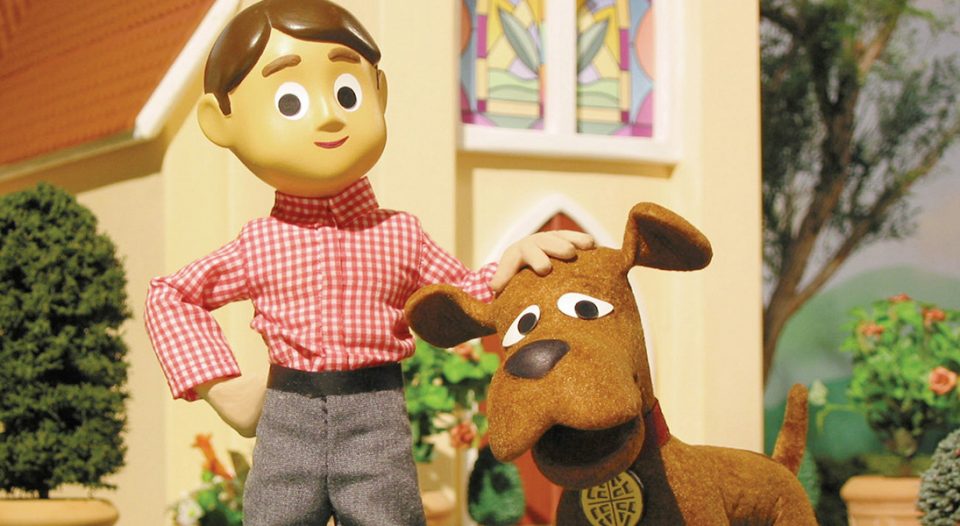This is a story about nostalgia and the changing church. In order to articulate this story, my nostalgia is going to run rampant. Bear with me, though, because your story is bound up in nostalgia as well, and we need to think about nostalgia in order to understand our calling from God.
More than once during my time serving as a parish pastor, I have unintentionally hurt people’s feelings when, for the sake of good order, I have moved objects in a church building. The first time, I moved one of those omnipresent Warner Sallman paintings of Jesus with his hippie beard and Scandinavian features from the youth room to keep it from being harmed by an impending Nerf gun battle. This was about 14 years ago. The second time was last weekend when I placed a Bible Bingo game on the giveaway table during my congregation’s annual spring cleanup day.
The people who confronted me about these items had strong emotional attachments to them, both for reasons that initially confounded me. Then I realized with a forehead slap that I have my own personal treasures; they make sense because I am the one who knows the backstory of how they became sacred to my life narrative. Every church building holds dozens of hidden treasures, imbued with holiness by virtue of their role in our life stories and, moreover, the stories of loved ones who have gone before us. This is why we pastors need to tread warily when we think something no longer has value or purpose in the parish setting. Understanding nostalgia is key to understanding our parishioners’ peculiar pains and joys.
From 2013-2014, I lived in East Jerusalem and served as pastor in the Old City. In the summer of ’14, my family moved from Jerusalem to the campus of the Lutheran Theological Seminary at Gettysburg, the oldest Lutheran seminary in the United States. Both places contain ordinary objects that are now sacred because of the stories in which they play an important role. It is humbling to witness the signs of reverence and devotion that visitors to these locales demonstrate on a daily basis.
In Jerusalem, the three Abrahamic religions lay claim to every stone by virtue of their connection to a sacred story. One such example is the Stone of Unction in the Church of the Holy Sepulchre, where tradition says the soldiers laid the body of Jesus after taking it down from the cross. Today, pilgrims pray, kiss and rub the stone with handkerchiefs because their faith infuses holiness into the object. Whether Jesus’ body actually made contact with this stone is irrelevant, because history has staked its holy claim on the cold, pockmarked surface.
On Seminary Ridge at about 4 p.m. on July 1 in 1863, thousands of Confederate soldiers pushed Union men east into the town and established their lines for the next two days of what would become the largest land battle of the Western Hemisphere. Today, while students walk across campus to their classes, thousands of tourists chug across the ridge in their tour buses, staring out the windows while trying to imagine the sights, sounds and smells of the battle more than 150 years ago. Just outside my living room window, young men from Maine blasted their cannons at young men from North Carolina, forever consecrating this ground (as Abraham Lincoln intoned during his address later that year).
I feel the sense of the profoundly sacred both in Jerusalem and now here in Gettysburg, not just because these places contain histories known to the world, but also because these are the places where I love and live with my wife and children. Our sacred narratives are woven into the collective narratives of these famous places. I remember with a smile how my kids argued over a bowl of hummus on the Mount of Olives where Jesus may have walked. My wife and I enjoy daily morning strolls through what once was a field of death and carnage here in Gettysburg. The overlapping memories collapse into the mind of God as the Holy Spirit cradles creation in a kairos moment—where all times and places are melded into one singular entity for the sake of creation’s redemption.
The world is always unfolding—the narrative always building. We Lutheran folks are part of this holy narrative. One does not have to live in Jerusalem or Gettysburg to encounter the sacred in the ordinary. The Holy Spirit sees all locations and times through the same lens of sanctified compassion. Our sense of nostalgia is bound up in the work of the Spirit, but now more than ever we must be mindful of how our nostalgia influences our ability to do God’s work in the world. The church writ large is in the midst of a massive paradigm shift. Call it downsizing or re-defining, we are learning that the meaning of the church is not necessarily contained in a building with a pastor attached. For many of us, this shift causes anxiety, as if someone moved our grandmother’s Warner Sallman Jesus from the youth room. For others of us, the shift gives us opportunities for reflection, to ponder our purpose and calling in this life.
The late Harvard professor, Svetlana Boym, defined two broad categories of nostalgia—restorative and reflective. The category of nostalgia we fall into is determined by our level of anxiety, resulting in whether our feelings help or hinder God’s emerging kingdom. Anxiety is a result of the human condition, but that doesn’t mean we have to let it control our lives. Anxiety is tempered by our capacity for love and fear and how they direct our desires (this is a vast oversimplification, but I am writing on a deadline here).
Restorative nostalgia is the destroyer of discernment processes. It creeps into our thinking, telling us that we should work as hard as possible to make our church resemble the church we cherish in our faulty memories. Anxiety would like us to think that declining enrollments, lack of pastors, or dwindling resources are the death knell of the church. We are like those Israelites in the wilderness, pining for the fleshpots of Egypt, conveniently forgetting that slavery was a price to be paid. We think that if only we can restore our church to the church of 1972 where the education wing was bursting at the seams with kids enraptured by Davey and Goliath films, then all will be well. Well, it won’t. And our memories are inaccurate at best. The kids were restless and distracted, and eventually they grew into sullen teenagers (who are now having their mid-life crises). Davey and Goliath were OK, but they weren’t the salvation of the world.
Reflective nostalgia, by contrast, is a way of acknowledging the anxiety that accompanies the ongoing changes. It places the past in a more thoughtful perspective, giving thanks for what has been, and asking what might be carried forward for the sake of the God’s future. It is unlikely that our education wings will ever be full to bursting circa 1972. This is OK. We need to take the treasures in our buildings and share them outside those sacred walls to meet today’s kids where they are at.
My church hosts a skateboard park on our campus twice a month. Davey and Goliath are nowhere to be seen (but I bet they would enjoy themselves if they showed up). A church is not defined by its numbers. Growth is not determined by bodies in pews on a Sunday. Ministry is not something we can measure by the pound. Reflective nostalgia helps open our minds to the work of the Spirit, and we can give thanks for the gifts of the past while focusing on the hope for the future, and celebrate with joy the plans God has for us.
The last words on nostalgia should always belong to Jesus (and I am paraphrasing here because my translation from the Greek is not altogether accurate): “Don’t let your hearts be troubled. Believe in God. Believe in me. The rest is just details.” Mic drop.




